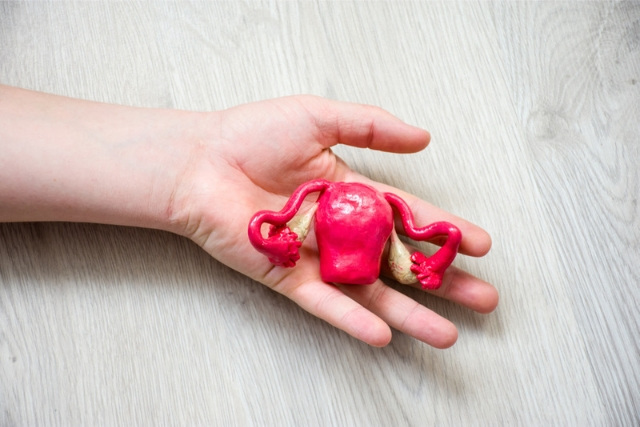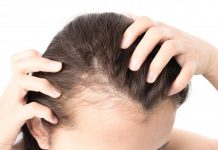Ovarian hyperstimulation syndrome majorly affects women undergoing fertilization induction treatments and taking hormonal preparatory injections and drugs to promote the growth of eggs in the ovaries. It usually develops about 10 days after fertility treatments. Spontaneous ovarian hyperstimulation syndrome is not related to fertility treatments and occurs rarely.
In This Article:
- What Is It?
- Symptoms of Ovarian Hyperstimulation Syndrome
- Causes of Ovarian Hyperstimulation Syndrome
- Risk Factors of Ovarian Hyperstimulation Syndrome
- Complications of Ovarian Hyperstimulation Syndrome
- Diagnosis of Ovarian Hyperstimulation Syndrome
- Prevention of Ovarian Hyperstimulation Syndrome
- Treatment of Ovarian Hyperstimulation Syndrome
- Home Remedies for Ovarian Hyperstimulation Syndrome
All You Need to Know about Ovarian Hyperstimulation Syndrome
What Is It?
Ovarian hyperstimulation syndrome (OHSS) is a condition in which the ovaries react abnormally to drugs administered for inducing conception and is characterized by significant ovarian enlargement because of multiple ovarian cysts and a fluid shift in the tissue space. Most cases are mild but severe do occur, although they are rare.
An excess dose of hormonal remedies or hormone-mimicking drugs can cause OHSS, in which the ovaries become enlarged and are painful. It is usually mild or moderate, but a few women may have a severe form of this condition which may lead to excess weight gain, pain in the stomach, vomiting and breathing difficulties.
Symptoms of Ovarian Hyperstimulation Syndrome
Mild to moderate OHSS –
- Mild pain in the tummy
- Bloating of abdomen
- Vomiting
- Loose motions
- Pain on touching the lower abdomen around the ovaries
- Drastic weight gain of about 3kgs
Severe OHSS –
- Rapid weight gain 15kgs in about 10 days
- Severe abdominal pain
- Severe gastric upset including vomiting and nausea
- Increased viscosity of blood in the lower limbs
- Reduced urine output
- Breathing difficulties
- Tense, distended abdomen
Causes of Ovarian Hyperstimulation Syndrome
Human chorionic gonadotropin (hCG) is a hormone normally produced and responsible for fertilization. It is medically supplemented in deficient women and it is this hormone that may cause OHSS if present in excess amounts. OHSS occurs only after the eggs are released from the ovary and the causes are –
- Injectable hormonal medications – after a dose of hCG, the patient may develop symptoms of OHSS.
- Repeated or high doses of ovarian stimulators – patients who get more than one dose of hCG after ovulation may lead to OHSS.
- Pregnancy – if a woman becomes pregnant (as a result of her normal ovulation) during this cycle of treatment, the externally administered hormone may overstimulate the ovary and therefore cause OHSS.
Risk Factors of Ovarian Hyperstimulation Syndrome
The following risk factors have been linked to the increasing prevalence of OHSS are –
- Young age – young women in the reproductive age group usually under 35 years to age.
- Polycystic ovarian syndrome (PCOS) – women who suffer from or have a history of PCOS, a condition of young women wherein the ovary is filled with small cysts and cause menstrual irregularities.
- Assisted reproductive techniques (ART) – women undergoing treatments for either primary or secondary infertility with techniques such as IVF, IUI or OI. ART is the most common cause found to be associated in most of the cases diagnosed with OHSS.
- A previous history of this also increases the OHSS risk
Complications of Ovarian Hyperstimulation Syndrome
- Hemodynamic and electrolyte disturbances – drastic fluid shifts out of the blood vessels may affect the blood pressure and salts of the body like Na, K etc.
- Thrombotic states – as estrogen is a pro-coagulant hormone, one may develop hemoconcentration (excessively thick and viscous blood) and hence abnormal blood clots in large vessels, usually in the lower limbs.
- Acute kidney failure
- Twisting of the ovary
- Rupture of the cyst in an ovary, which can lead to serious bleeding
- Excess fluid causes shortness of breath
- Miscarriages or abortions
- Death
Diagnosis of Ovarian Hyperstimulation Syndrome
OHSS is based on a combined approach with clinical examination and tests including blood tests and sonography. Certain factors like abnormal weight gain, increased waist circumference, attributes like abdominal pain, urinary complaints or breathing difficulties may alert the doctor to investigate for OHSS and other complications.
There may be a need for a vaginal ultrasound, which shows enlarged ovaries usually containing fluid-filled cysts. A very high-beta hCG level or deranged kidney function tests may hint towards a diagnosis of OHSS.
Prevention for Ovarian Hyperstimulation Syndrome
Reducing excessive gonadotropins – low dose gonadotropin protocols have been publicized to prevent OHSS in high-risk patients with a past history of PCOS and includes various steps like-
- Cycle cancellation (withholding hCG)
- Coasting or soft landing (in case there is high estrogen levels or many developed follicles, the doctor may recommend waiting for a few days before administering hCG, which triggers ovulation)
- Modification of ovulation-triggering agent. Replacement of hCG by exogenous or endogenous LH (central hormone which controls the activity of ovaries).
Treatment for Ovarian Hyperstimulation Syndrome
Mild OHSS usually resolves spontaneously in about a week’s time after proper diagnosis. It may require an OHSS diet that is eating a high-protein diet is recommended. Please consult the doctor before starting any new diet.
Moderate OHSS required close monitoring of vital parameters and adequate fluids prevent dehydration.
Severe OHSS is rare usually necessitates hospitalization and aggressive treatment which involves IV fluids, anticoagulants (blood thinners), electrolyte corrections, blood components and intensive care including cardiovascular backup and OHSS radiology management.
Home Remedies for Ovarian Hyperstimulation Syndrome
There are no scientifically documented home remedies for the treatment of OHSS. It is recommended to refrain from drinking excessive amounts of water or consuming any anti-inflammatory medicines such as aspirin as this can affect the kidneys. Also, ensure to keep moving the legs periodically to lower the risk of blood clots.
Conclusion
As OHSS is usually a side effect or complication of fertility treatment, it should have a high index of suspicion by the treating gynecologist and may be prevented if diagnosed in the early stages. Consult the doctor if any kind of symptoms is present.
Refrences
https://www.ncbi.nlm.nih.gov/pmc/articles/PMC3205536/
https://parenting.firstcry.com/articles/a-guide-to-ovarian













